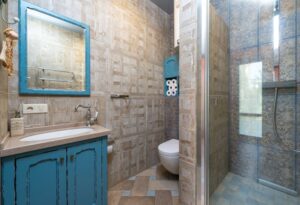Introduction: Why It’s Important to Cut Down on Sound from Open Space
In today’s fast-paced world, noise pollution is a growing concern, particularly in open spaces like offices, restaurants, and urban areas. The challenge of trying to cut down on sound from open space is more pressing than ever before. Whether you’re working in a shared office, enjoying a meal in a bustling restaurant, or trying to relax at home, unwanted sound can cause stress, reduce productivity, and negatively affect your well-being.
Learning how to cut down on sound from open space can significantly improve the quality of life in such environments. This involves both technological and practical approaches, such as soundproofing, using noise-canceling technology, and incorporating design features that minimize the impact of noise. It’s also essential to address environmental factors such as the location of the space and external noise influences.
In this comprehensive guide, we will explore several methods to help you effectively cut down on sound from open space. From simple DIY techniques to advanced soundproofing strategies, we’ll provide you with solutions that can be easily implemented at home, in the office, or in public spaces. Read on to discover the best ways to reduce noise in your surroundings.
Understanding Sound and Its Impact on Open Spaces
Before you can effectively cut down on sound from open space, it’s important to understand how sound works. Sound is a physical phenomenon that travels through the air in waves. These waves can be reflected, absorbed, or transmitted depending on the materials and surfaces they encounter. In open spaces, sound can bounce off hard surfaces, creating echoes and amplifying noise levels.
When noise enters a space, it is often amplified by reflective surfaces such as glass, concrete, and metal. This can cause disturbances in environments like offices, restaurants, or public spaces, leading to distractions and discomfort. The goal when trying to cut down on sound from open space is to either absorb or block these sound waves.
Various soundproofing techniques focus on controlling the way sound travels through a space. For instance, materials like foam, curtains, and carpets are designed to absorb sound, while partitions and walls help block it. Understanding the nature of sound and its behavior in open areas is the first step in finding solutions to cut down on sound from open space.
Identifying Key Areas Where Sound Needs to Be Reduced
When working on how to cut down on sound from open space, it’s essential to first identify the key areas where noise reduction is most needed. In many cases, the primary sources of sound in open spaces come from human activities, machinery, or external noise like traffic.
In office settings, sound may stem from conversations, phone calls, and typing sounds, all of which contribute to a noisy atmosphere. Restaurants and cafés, on the other hand, often experience high levels of ambient noise caused by conversations, clattering dishes, and background music. These environments can be overwhelming, making it difficult to focus or relax.
Once you’ve pinpointed the main sources of sound in a particular space, you can begin implementing targeted strategies to cut down on sound from open space. Solutions such as installing acoustic panels, using noise-canceling devices, or adding more barriers between sound sources can effectively address the noise issues.
Effective Soundproofing Techniques to Cut Down on Sound from Open Space
Soundproofing is one of the most effective ways to cut down on sound from open space. By creating barriers that absorb or block sound waves, soundproofing techniques can drastically reduce noise levels. There are several approaches you can take to soundproof your space:
- Acoustic Panels and Foam: Installing acoustic panels or foam tiles on walls, ceilings, and floors can help absorb sound and reduce reverberation. These panels are particularly effective in offices, conference rooms, and home studios.
- Insulated Windows and Doors: Replacing windows and doors with insulated versions or adding weather stripping around existing windows can significantly reduce external noise from traffic, construction, and other outdoor sources.
- Curtains and Drapes: Heavy curtains and drapes made of sound-absorbing fabric can help reduce sound from both outside and inside the space. They work particularly well in bedrooms, living rooms, and offices.
By employing these soundproofing techniques, you can dramatically cut down on sound from open space and create a quieter, more comfortable environment.
Using Noise-Canceling Technology to Cut Down on Sound from Open Space
In addition to physical soundproofing, noise-canceling technology is another excellent solution for cutting down on sound from open space. Noise-canceling headphones, for example, are designed to reduce ambient noise by generating sound waves that counteract the unwanted noise.
For larger spaces, noise-canceling devices can also be used. These devices work by detecting the sound frequencies in the environment and emitting counter frequencies to cancel out the noise. This technology is especially useful in open offices or public areas where noise levels can be unpredictable.
By incorporating noise-canceling technology, you can create a more peaceful environment and enhance focus and productivity. Whether you’re using headphones or investing in advanced noise-canceling systems, this technology offers a quick and efficient way to cut down on sound from open space.
Designing Your Space to Minimize Noise
The layout and design of your space can also play a key role in cutting down on sound from open space. Thoughtful design choices can help to reduce noise by creating physical barriers, improving acoustics, and enhancing sound absorption. Some ideas for noise-reducing design include:
- Strategically Placing Furniture: Use furniture to create physical barriers that block sound. For example, bookshelves, large furniture items, and partition walls can help minimize the transmission of noise between different areas.
- Soft Surfaces and Fabrics: Incorporating soft surfaces such as rugs, cushions, and upholstered furniture can absorb sound and prevent it from bouncing around the room. This is especially important in spaces like living rooms or offices.
- Open-Plan Considerations: In open-plan environments, use partitions or cubicles to create separate zones that can contain noise and reduce distractions.
By designing your space to minimize sound, you’ll find that your environment feels quieter and more conducive to work, relaxation, or socializing.
Creating Sound-Absorbing Environments
In addition to traditional soundproofing methods, there are other ways to cut down on sound from open space by creating environments that naturally absorb sound. Plants are an excellent way to reduce noise in a room while adding aesthetic appeal.
Certain plants, such as large leafy varieties, can act as sound absorbers by disrupting sound waves. These plants not only improve the acoustics of your space but also contribute to a healthier, more inviting atmosphere. Placing plants in strategic locations, such as near windows or along walls, can help to reduce sound levels.
Another way to create sound-absorbing environments is by using textured surfaces. Wall hangings, fabric-covered walls, and acoustic art installations can all contribute to absorbing sound and reducing reverberation in a room.
Minimizing Sound Transmission with Structural Changes
For more permanent solutions to cut down on sound from open space, structural changes may be necessary. If you own the building or have permission to make alterations, you can make changes that significantly reduce sound transmission.
Some structural changes to consider include:
- Adding Extra Layers of Drywall: Installing additional layers of drywall, especially in areas where sound transmission is problematic, can block out noise.
- Using Soundproof Insulation: If you’re constructing or remodeling, using soundproof insulation materials like mineral wool or fiberglass can help prevent sound from traveling through walls and ceilings.
- Upgrading to Solid Core Doors: Replacing hollow core doors with solid core doors can reduce noise transmission between rooms.
By implementing these structural changes, you can significantly reduce sound from open spaces and improve the overall acoustics of your environment.
Dealing with External Noise Sources
Sometimes, the most significant noise comes from external sources such as traffic, construction, or public gatherings. In these situations, cutting down on sound from open space may require more specific solutions aimed at blocking external noise.
- Soundproofing Windows: Windows are a common entry point for external noise. Consider installing double-glazed windows or adding acoustic window films to reduce sound infiltration.
- Outdoor Barriers: If you’re dealing with noise from outside your building, outdoor barriers such as fences, trees, or hedges can help absorb and deflect sound.
Addressing external noise sources is essential for cutting down on sound from open space, particularly in urban environments.
Conclusion: Mastering the Art of Cutting Down on Sound from Open Space
In conclusion, knowing how to cut down on sound from open space is a valuable skill for anyone looking to improve their living or working environment. From soundproofing techniques and noise-canceling technology to design strategies and structural changes, there are numerous solutions to reduce unwanted noise.
By implementing the right combination of methods, you can create a more peaceful, focused, and productive space. Whether at home, in the office, or in a public space, cutting down on sound from open space can enhance your quality of life and contribute to a quieter, more comfortable atmosphere.

Share this:
- Click to share on Facebook (Opens in new window) Facebook
- Click to share on X (Opens in new window) X
- Click to share on LinkedIn (Opens in new window) LinkedIn
- Click to share on Reddit (Opens in new window) Reddit
- Click to share on X (Opens in new window) X
- Click to share on Threads (Opens in new window) Threads
- Click to share on WhatsApp (Opens in new window) WhatsApp




